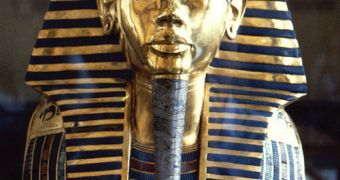This is the second time Egypt conducts DNA tests in order to identify the mummy of an important pharaoh. Last year, the Egyptian authorities carried out a test involving the mummy of a female believed to be Queen Hatshepsut, but the results have never been disclosed. This time the 3,500 year old mummy of what experts believe to be the remains of one of the most important pharaohs in the history of Egypt, King Thutmose I, will be subjected to DNA and X-ray tests in order to establish its true identity.
According to Egypt's antiquities chief, Zahi Hawass, the tests will start today with the removal of the mummy from its resting place in Luxor's Valley of the Kings. Another mummy currently displayed in the Egyptian Museum, was previously believed to be the remains of Thutmose I but it was later proven that they in fact belonged to somebody else.
Thutmose I was the third pharaoh of Egypt's 18th dynasty, believed to have ruled between 1506 and 1493 B.C. After his death, he was succeeded by Thutmose II and his sister, Hatshepsut, Egypt's most powerful female pharaoh.
Considering the age of the mummy, the DNA investigations would have to be restricted to analyzing DNA strands found inside the cell's nucleus, since this contains DNA codes from the parents. Even so, the chances of finding any DNA are extremely low. Also, Hawass failed to report whose DNA the mummy's will be compared to.
There is a lot of secrecy coming from the Egyptian authorities, especially when it comes to revealing information regarding its mummies. DNA testing was only recently allowed by Hawass, although under the expertise of Egyptian researchers. Hawass reckons that such information regards national security, while other experts believe that Egypt fears for the authenticity of the lineage of its mummies.
The investigations will be carried out at the Egyptian Museum in Cairo, marking this the first time when the mummy is removed from its tomb since its discovery.

 14 DAY TRIAL //
14 DAY TRIAL //